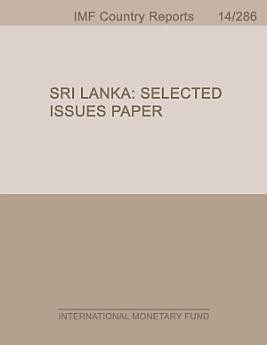Sri Lanka: Selected Issues
International Monetary Fund. Asia and Pacific Dept
sht 2014 · International Monetary Fund
Libër elektronik
45
Faqe
reportVlerësimet dhe komentet nuk janë të verifikuara Mëso më shumë
Rreth këtij libri elektronik
EXECUTIVE SUMMARY The first chapter on monetary policy transmission examines the channels through which innovations to policy variables—policy rate or monetary aggregates—affect such macroeconomic variables as output and inflation in Sri Lanka. The effectiveness of monetary policy instruments is judged through the prism of conventional policy channels (money/interest rate, bank lending, exchange rate, asset price channels) in VAR models, and the timing and magnitude of these effects are assessed using impulse response functions, and through the pass-through coefficients from policy to money market and lending rates. Our results show that (i) interest rate channel (money view) has the strongest Granger effect on output with 0.6 percent decrease in output after the second quarter and a cumulative 0.5 percent decline within a 3 year period in response to innovations in the policy rate; (ii) the contribution from the bank lending channel is statistically significant (adding another 0.2 percentage points to the baseline effect of policy rates) in affecting both output and prices but with a lag of about 5 quarters for output and longer for prices; (iii) the exchange rate and asset price channels are ineffective and do not have Granger effects on either output or prices. The second chapter takes a fresh look at the public debt reduction strategy. It asks two questions: (i) what has been driving the increase and subsequent decline in Sri Lanka’s public debt? (ii) Is Sri Lanka’s public debt too high, and if yes, how much, how fast and how should it be reduced? The chapter finds that, until recently, favorable interest rate-growth differential reflecting the combination of relatively high real GDP growth and low real interest rates on public debt has worked to reduce the debt ratio, even as primary deficits and occasional currency depreciation pushed the ratio in the opposite direction. More recently, however, the average borrowing costs began to increase, reflecting the reduced role of concessional financing and increased resort to market borrowing. Thus, debt reduction became more dependent on real growth and stronger primary balance, and this trend is likely to continue. The chapter documents that Sri Lanka’s public debt is one of the highest among the emerging economies, particularly when measured against the relatively low revenues, and suggests that the authorities target its gradual reduction to 50 percent of GDP, relying mainly on revenue measures. This target is more ambitious than the authorities’ medium-term objective of reducing the debt ratio to 60 percent of GDP, but it is considered by staff as prudent.
Vlerëso këtë libër elektronik
Na trego se çfarë mendon.
Informacione për leximin
Telefona inteligjentë dhe tabletë
Instalo aplikacionin "Librat e Google Play" për Android dhe iPad/iPhone. Ai sinkronizohet automatikisht me llogarinë tënde dhe të lejon të lexosh online dhe offline kudo që të ndodhesh.
Laptopë dhe kompjuterë
Mund të dëgjosh librat me audio të blerë në Google Play duke përdorur shfletuesin e uebit të kompjuterit.
Lexuesit elektronikë dhe pajisjet e tjera
Për të lexuar në pajisjet me bojë elektronike si p.sh. lexuesit e librave elektronikë Kobo, do të të duhet të shkarkosh një skedar dhe ta transferosh atë te pajisja jote. Ndiq udhëzimet e detajuara në Qendrën e ndihmës për të transferuar skedarët te lexuesit e mbështetur të librave elektronikë.








